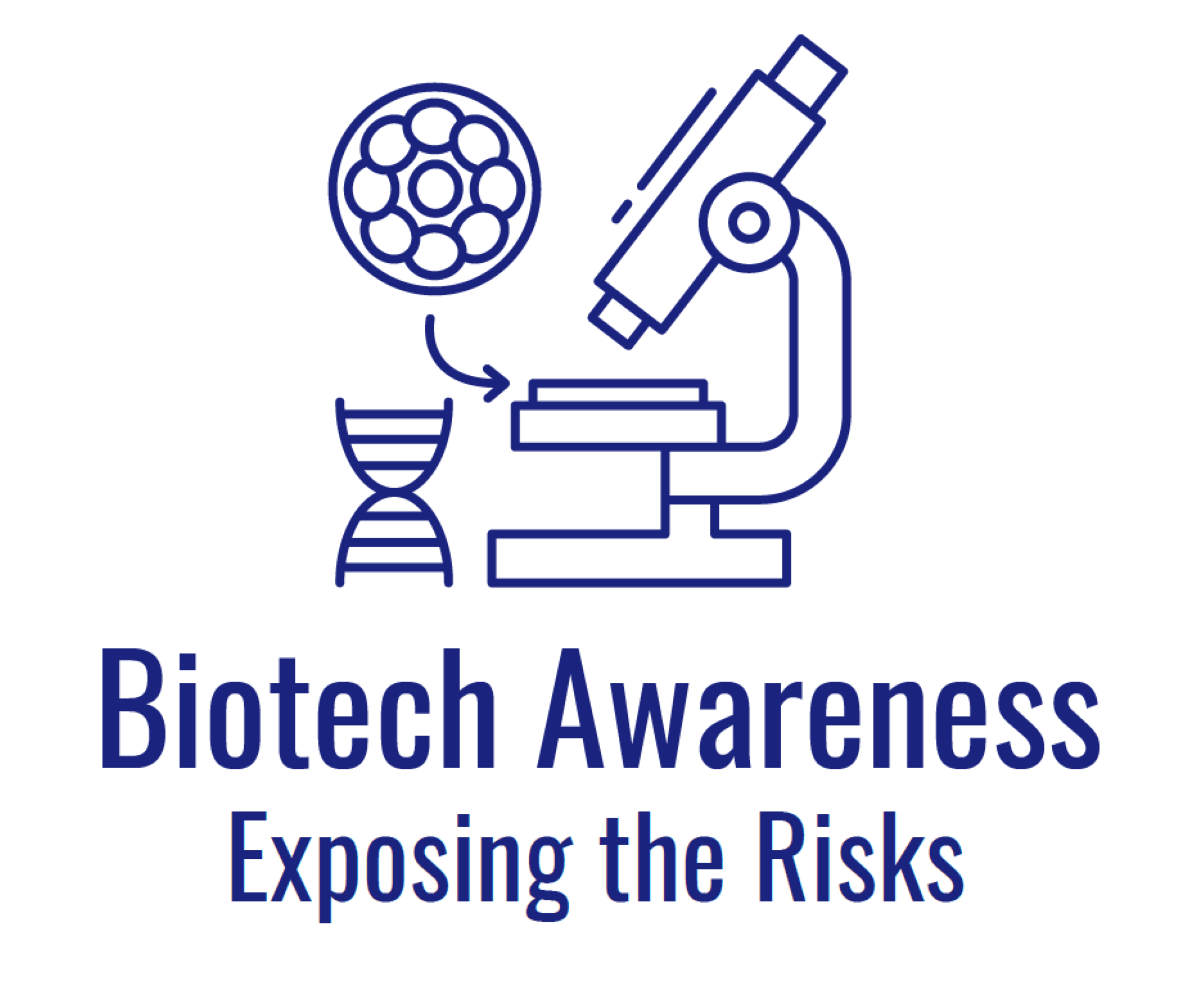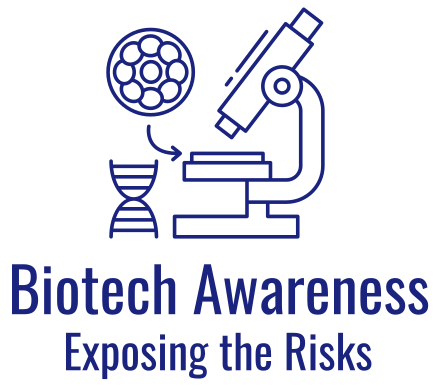2009 Application for Reassessment of a New Organism
Application for Reassessment of a New Organism
Submitted to New Zealand's Environmental Risk Management Authority (ERMA) on October 21, 2009
On October 21, 2009, the Environmental Risk Management Authority (ERMA) in New Zealand received an Application for Reassessment of a New Organism in Containment under 62(1)(a) of the Hazardous Substances and New Organisms (HSNO) Act 1996.
The Application for Reassessment was submitted by GE Free (NZ) in Food and Environment.
Details from the original application:
- Application GMD09011 submitted by AgResearch, Ruakura, Palmerston North
- Organism details - Unknown
- Name of organisms - Unknown
- Host organisms - mouse, rat, rabbit, guinea pig, possum, pig, sheep, cattle, goat, chicken, dog and cat
Here are a few excerpts/concerns from the 2009 Application for Reassessment:
The applicant does not identify any specific gene/s of interest however does talk about "infecting human and animal cell lines" and "cannot replicate to produce further infectious particles" meaning these genes of interest are transducers or infectors of animals or cells.
The applicant vaguely and generically refers to a list of material that may or may not be present in the engineered recombinant organisms.
The application took one week to process after it had been formally received and it is highly unlikely that ERMA has been able to have prepared the requisite risk assessment on the full repercussions of what kind of unidentified organism is being created and how disease may be spread through the air, water and soil.
The Authority is asking the public to believe that in one week the agency staff and Authority had expertly reviewed, weighed and evaluated every unknown organism that could be created in light of sections 4, 5, 6, 7, 8, 9 and 36-42A of HSNO and the full methodology as stated in the application.
ERMA has breached the grounds of statutory process in approving an application that does not identify the organism details. This poses great economic risk to New Zealand in the area of human and environmental spread. It also threatens the biosecurity of the country and should be immediately withdrawn and resubmitted as an application of high interest and put out for notification.
Health problems for laboratory, animal handlers and community (HSNO s:40(2)(a)(v))
We are highly concerned with the reports on the lethal and chronic worker health issues that are being reported from their work environment from recombinant technology.
There are no protocols around the movement of workers in and out of the facility or regular health checks that may show possible health problems.
There are no conditions on the control of infectivity from aerosol droplets or indoor clean down processes of effluents, bedding, foods or milks.
This has not been addressed at all by ERMA in its decision and we believe that this calls for an immediate withdrawal and reassessment of the trial. All of these cases the laboratories were working with rAAv vectors systems.
- On September 13, 2009, Malcolm Casadaban, a molecular geneticist died. His death has been attributed to the weakened laboratory strain of the “plague virus” Yersiniapestis that he was working on. This is totally shocking to the scientific world and highlights the fatal lack of information on supposedly weakened or non replicating vector systems. (footnote 5)
- Becky McClain, a molecular biologist working for Pfizer, sued the company after she severe immune reaction symptoms of joint pain, chronic fatigue, numbness and multiple sclerosis type symptoms after working around recombinant organisms. (footnote 6)
Additional excerpts from the Application for Reassessment
Additional concerns included in the report:
- David Bell (pictured on left) genetic microbiologist working at AgraQuest, has suffered severe ear nose and throat problems with a thick, rubbery, hyperplastic like substance draining from his sinuses. He has also suffered immune system breakdown from 19 different workplace micro organisms found in his blood, sputum and IgG immune cells. (footnote 7)
- A molecular Biologist Dr. Jeannette Adu-Bobie suffered severe body mutilation resulting in the amputation of her legs, one arm and the fingers on her other hand after contracting the meningococcal disease strain she was working on at the ESR laboratory in New Zealand. This was supposedly a recombinant weakened non-virulent laboratory strain of Neisseria meningitidis" (footnote 8)
Protocol around disposal of infected waste products (Standard 154.03.05)
It is highly concerning to see that ERMA has not addressed the disposal of waste products.
There are no conditions on the control of infectivity from aerosol droplets or indoor clean down processes of effluents, bedding, foods or milks from animals.
There has been no evaluation on the escape of such effluent down drains or into fields.
There is no restriction on the number of animals to be produced or how the recombinant host animals and surrogates are to be disposed of.
Studies published by Turin, et al, reported that the transgenic foetal blood passed through the placenta into the mother or surrogate cow and was detected for up to two years.
This is of high concern as there is also no specification about segregation of animals with differing transgenic traits or whether they are going to be housed together or on a rotation basis. There are no details of how large animals can be kept indoors for their lives which falls under animal health protocols.
Laboratory Facilities
The Pirbright Facility breach cost DEFRA many millions of pounds in clean up costs due to the escape of a virulent laboratory created foot and mouth bacterial vaccine strain that escaped into the environment contaminating the river water way and caused a virulent GE foot and mouth outbreak in five farms, ten miles downstream, sparking a total panic and shut down of the agricultural sector. This experiment was considered "in containment" and "unable to cause disease."
Summary
We would like ERMA to consider these new grounds identified above to be approved for further consideration under s:64 in light of new information on:
- The use of potential disease causing genes of interest and high risk vector elements to make a recombinant microorganism makes this a Risk Group 3&4
- Lack of identification and characteristics of the modified Host Organism
- Laboratory workers and community health dangers
- The ability to threaten the animal health and safety and Biosecurity of New Zealand
- The lack of proper containment and effluent disposal protocols
- The high public interest in the decision to approve the application, which necessitates that it be re-assessed
We request that these points be addressed immediately and submitted as a publicly notified application.
Submitted by GE Free NZ in Food and Environment (speaking out against GE -- genetically engineered -- organisms)
Decision issued by ERMA
ERMA issued their Decision on January 21, 2010. Please read ERMA's
2010 Decision for more details.
SPREAD THE WORD. RAISE AWARENESS ABOUT RISKS IN THE BIOTECH INDUSTRY.
FAIR USE NOTICE: This site may contain copyrighted material the use of which has not always been specifically authorized by the copyright owner. We are making such material available in our efforts to advance the understanding of environmental, political, human rights, economic, democracy, scientific and social justice issues. We believe this constitutes a 'fair use' of any such copyrighted material as provided for in section 107 of the US Copyright Law. In accordance with Title 17 U.S.C. Section 107, the material on this site is distributed without profit to those who have expressed a prior interest in receiving the included information for research and educational purposes.

